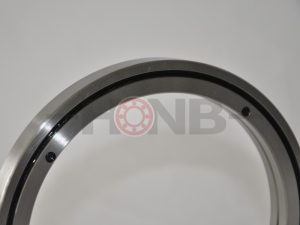Summary of mechanical seal selection introduction
Author: hongyuanTime:
For more than 100 years, people have used a variety of sealing materials such as packing to reduce the amount of liquid leaking from the pump housing along the main shaft. Although the liquid pumps used in the modern process flow, the oldest sealing design, the stuffing box, is still widely used because of its low initial cost and familiarity with the factory staff. However, due to environmental problems, the method of using packing seals has gradually become unacceptable, especially for the more common and highly corrosive liquids in modern technological processes. Therefore, in practical applications, more and more mechanical seals are used instead of packing seals.
The seal between the rotating surface and the stationary surface is the most critical factor in determining the sealing performance. The mechanical seal on the basis of which has 4 leakage paths that need to be sealed:
1) The passage between the sealing surfaces;
2) The path between the rotating surface and the main shaft;
3) The passage between the fixed surface and the gland;
4) The passage between the gland and the stuffing box.
The latter two leak paths are generally statically sealed since there is no relative motion between the two parts. This part of the seal is usually called a three-time seal, and its sealing material is a gasket or an O-ring that is compatible with the process liquid.
In newer seal designs, the secondary seal is at rest, thus avoiding galling corrosion problems on the main shaft. During the normal operation of the liquid pump, the pressure between the rotating surface and the stationary surface is kept in a sealed state by the pressure generated by the liquid in the stuffing box. When starting and stopping, the pressure of the stuffing box is maintained by the pressure generated by the spring. Most mechanical seal designs use a softer material for the rotating face, causing it to rotate and rub against a harder, stationary face. For many years, the most common combination has been to utilize a carbon material as the rotating surface running on a ceramic stationary surface.
From this point of view, it is very important that these sealing contact surfaces are handled with care and that installation instructions are strictly followed to ensure that the sealing surfaces are properly protected and properly seated. The flexibility of sealing selection The axial and radial movement of the main shaft needs to maintain a certain degree of flexibility with the spring to ensure the sealing between the contact surfaces. However, only a certain degree of flexibility can be provided. The mechanical condition of the pump and its length-to-diameter ratio (a measure of the ratio of the diameter of the main shaft to its extension, the lower the better) play an important role in the reliability of the seal. Seal flexibility is typically provided by a large main spring and a series of smaller springs or bellows seals. Traditional seal designs used in the chemical industry, where the sealing pressure is applied to a rotating face, are called rotary seals because the spring or bellows seal rotates with the shaft. Newer designs have springs or bellows seals mounted on stationary surfaces. In the current mechanical seal, the above two sealing methods are very commonly used, so there is a certain flexibility for installation.
Many mechanical seals of earlier designs used a single large spring arranged around the main shaft to provide strong sealing force to the seal faces during pump start-up. The function of the seal relies on the rotation of the spindle to tighten the spring coil. The seal designed in the later period adopts a series of smaller springs arranged around the main shaft, which can generate a relatively uniform load pressure on the sealing surface. Most of these seals are completely isolated from the liquid being pumped because the smaller spring can be pre-installed.


We have rich experience on precision bearing manufacturing and are ranked NO.1 in China and NO.3 all over the world.
We can tailor the overall solution for the use of precision bearings.
HONB– Accountability & Innovation
countability & Innovation
Products
- YRT rotary table bearing
- YRTS rotary table bearing (high speed series)
- YRTM with integral angular measuring system series
- ZKLDF axial angular contact ball bearing series
- RA series crossed roller bearing
- SX series crossed roller bearing
- CRBH series crossed roller bearing
- RE series crossed roller bearing
- RU series crossed roller bearing
- RB series crossed roller bearing
- XR/JXR series crossed taper roller bearing
- Crossed roller bearing
Contact Us

✉️ bearing20@hyzcgroup.com
📞 +86 15236685001





